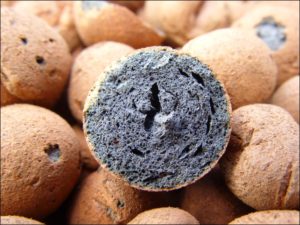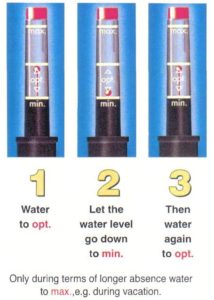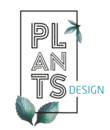The hydroculture plant system became very popular in 1980’s and 1990’s, mostly in Germany, but expanded into a lot of other countries as well. At home or at work, everybody was attracted to this easy plant system. Nowadays hydroculture plants are most common in commercial projects, such as offices, hotels, shopping malls and especially hospitals, where hygiene is of great importance.
WHAT IS SO SPECIAL ABOUT HYDROCULTURE?
When looking at a hydroculture plant the first things you will notice is that
- there is no soil
- the plants are in a material called expanded clay or else known as LECA or LECATON
- each plant has a water indicator.

WHAT IS LECA?
LECA is expanded clay that has been burned 1200 C and keeps the plant in place. But it has benefits that makes it stand out next to a soil plant: due to the baking it is free of bacteria, it will never decompose or decay, so it never ever needs to be replaced. A hydroculture plant can stay with the same LECA for 30 years.
LECATON is rough on the outside and sponge-like in its inner texture. Being rough allows the water poured in to reach the plant root at the bottom of the plant pot – exactly where the water is required. Having the sponge effect helps it to store water to a certain degree, so that when the water level is back to the MINIMUM level, the plant roots can still get water which is stored inside the LECA.

WHAT IS THE WATER INDICATOR?
Water is a hydroculture plant’s nutriment. So it is important to know when and how much ‘nutriment’ your plants needs. The water indicator helps you with that. It tells you exactly when you should be watering the plant and how much water you should be giving to the plant. How much easier can it get?

HOW OFTEN DO YOU WATER A HYDROCULTURE PLANT?
The water indicator has there levels:
- Minimum – time to water the plant
- Optimum – 3 to 4 weeks
- Maximum – 6 to 8 weeks
You typically water each plant to the OPTIMUM LEVEL and it takes about 3-4 weeks (!) for the water to reach the minimum level again. That means no watering of the plant for 3-4 weeks! And that also means that you are free of constantly having to check the soil – if it is wet, humid or already dry- and to set up by yourself for each plant separately a watering schedule. The water indicator simply takes over and leaves you to just enjoy the plant.
The MAXIMUM LEVEL is called often the ‘vacation level’, because it leaves you with 8 weeks (!) of not needing to water the plant. But on a regular basis it isn’t something we as experts in this field since 1980 like to support, since it will lead to over watering of the hydroculture plant.
Being typically used to checking up regularly on a soil plant, this is usually the most new and fascinating for someone when having a hydroculture plant for the first time. And it might need some time to get used to. But with all the hectic life we are leading now, having one thing less to worry about and instead simply enjoy – is alone worth it to get a hydroculture plant.
And the constant over- and under watering is one of the main reasons soil plants often die. On the other hand a hydroculture plant can grow up to 20 years, maybe even more. Which is pretty amazing when you truly think about it.

WHAT ARE THE BENEFITS OF HAVING NO SOIL?
- As seedling the hydroculture plant is directly planted into LECA. So from from the very start the roots are free of any typical bacteria. That helps with the survival and longevity of a plant.
- Soil typically attracts insects, which makes it ‘un-hygienic’ plants and not recommendable to be used in especially hospitals or restaurants (close to the kitchen area), where cleanliness is of great importance. Designers are often faced with this issue and sometimes fall back on artificial plants or more often than not simply exclude plants from their designs concepts. And that is actually counter productive. It has been proven in numerous studies that plants help in the healing of patients. They have a calming effect as well as being able to absorb a lot of toxins through the leaves. So plants should be used in hospitals & clinics and hydroculture is the solution.
- Soil dries out and through the A/C the dust is carried around the living or working space. It effects you and your health.
WHAT HYDROCULTURE PLANTS ARE THERE?
Nearly any plant type can be grown and is available in the hydroculture nurseries. You can get small table top plants of 20 cm height up to trees of 5 m.

Contact us. Let yourself be convinced personally of the many ways hydroculture enriches your life.







